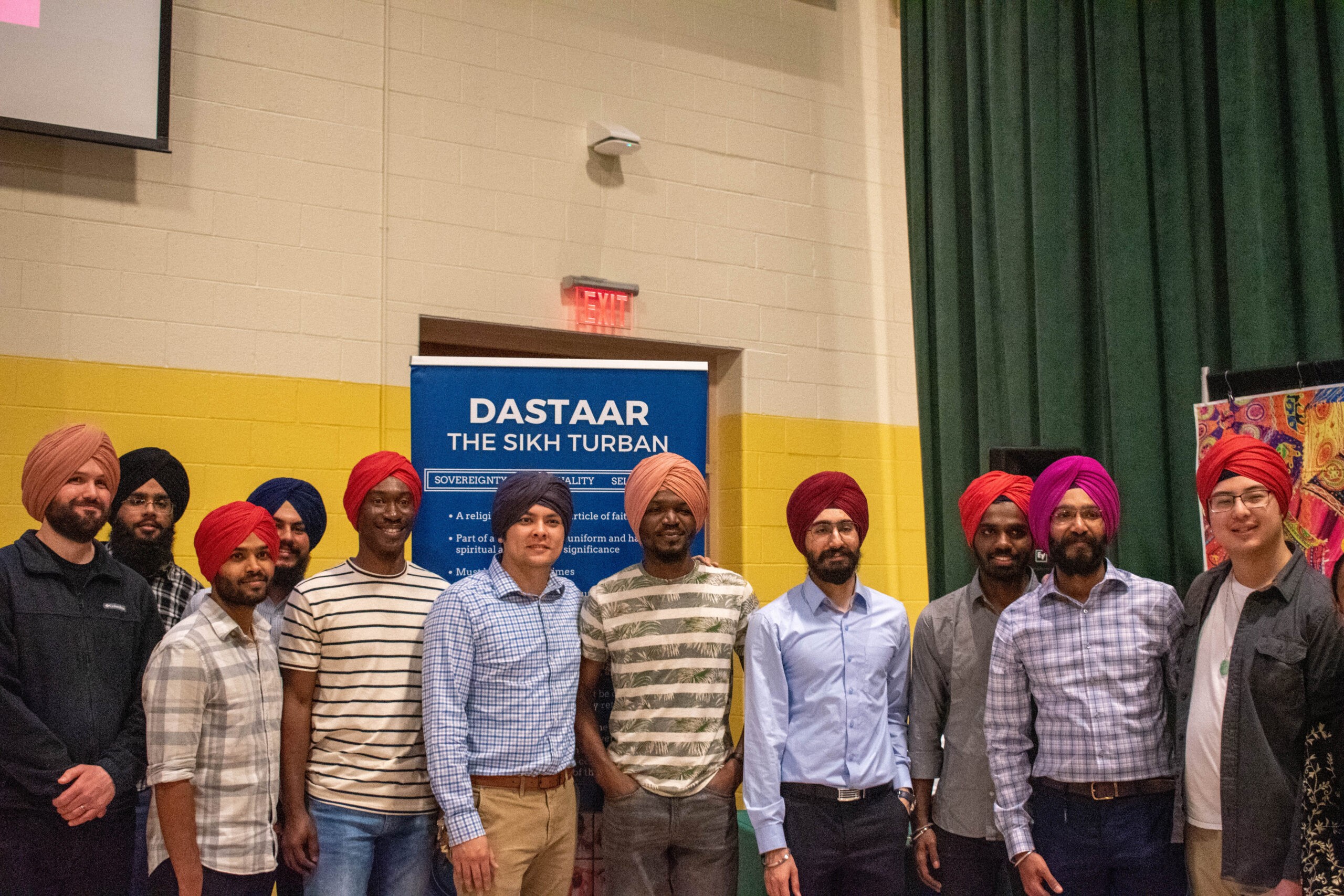
Vaisakhi Event | Photo by Monica Brutto | The Wright State Guardian
On April 14, the Sikh community of Wright State University and Dayton came together to celebrate a harvest festival while increasing visibility through education about Sikhism.
Vaisakhi and special significance
According to Harshdeep Singh, a Sikh graduate student studying computer science, Vaisakhi is a harvest festival that commemorates the day that the tenth Sikh Guru, Guru Gobind Singh, founded the order of the Khalsa in 1699. Harshdeep Singh described the Khalsa.
“The Khalsa [is] a community of Sikhs committed to upholding social justice, equality and humanitarian values,” Harshdeep Singh said. “Vaisakhi is not just a religious festival but also carries social significance.”
This day, which falls on April 14, is the start of the second month on the Sikh calendar.
The Sikh community at WSU held a Vaisakhi event with co-sponsors, including the University Center for International Education, the Asian Student Association and the Sikh Society of Dayton.
Harshdeep Singh explained that the Dayton Sikh community has always been supportive of the WSU Sikh community in its effort to promote and educate about the culture. ASA assisted with administrative processes, while UCIE supported the event through food and customary assistance.
Speakers discuss the importance of Vaisakhi
One of the speakers at the event, Sameep Singh, a Wright State alumni, expressed gratitude for this second recent Sikh event.
“I am glad to be back at this auspicious event,” Sameep Singh said.
After describing the aftermath of the September 11, 2001 al-Qaeda attacks and discrimination the Sikh community faced, Sameep Singh discussed the importance of Vaisakhi and introduced the second speaker, Aasees Kaur.
In the speech, Kaur described Vaisakhi as a lively, colorful and high-energy festival. Kaur noted the importance of sharing this narrative in Sikh terms.
“Instead of trying to translate, I’m going to be referring to our faith and practice in our language,” Kaur said.
This use of language was an important factor in Kaur’s speech. Kaur explained that the public usually hears about the Sikh community through media during moments of pain after an attack or tragic event. The speaker described this type of response and why it is important for Sikhs to tell a personal story.
“That response is almost always reactionary, which means it’s not reflective of the depth of a community and hyper-focused on a singular topic,” Kaur said. “When we proactively engage with our neighbors, it affords us the luxury to…share in a way that we feel embraced and not just tolerated.”
Throughout the speech, Kaur highlighted renewal, rejuvenation and service to humanity using a strong moral code that can challenge unjust powers and promote restorative justice. Hope, acceptance and love rang throughout Kaur’s speech.
Another speaker, Gurvir Singh, is a WSU student in the military who expressed gratitude to America for allowing a continued service of both religion and country. Gurvir Singh highlighted the importance in Sikh culture to defend the weak and help others, which the military service allows and promotes.
The event and atmosphere
In the Vaisakhi celebration, it is traditional to utilize a langar, which is a community kitchen crucial to Sikh culture, to provide free and prepared meals to all. Harroop Singh, a Sikh graduate student studying computer science, explained a langar meal.
“Langar meals typically include vegetarian dishes such as dal [lentil soup], roti [flatbread], sabzi [vegetable curry] and kheer [rice pudding],” Harroop Singh said.
Harshdeep Singh mentioned that it is best to consult with local traditional practices, which can vary among different Sikh communities.
The Sikh community welcomed attendees to experience turban tying at the event as well, highlighting an important part of the Sikh faith.
“By experiencing the process of tying a turban, students can gain a hands-on understanding of this cultural practice, which holds great significance for Sikhs,” Sameep Singh said.
Upon walking into the Student Union Apollo Room, students were met with a plethora of decorative and informational poster boards that showcased different aspects of Sikh faith and culture, including Bhangra and Gidha.
Reflections of the event
Anna Scanlon-Kimura, an undergraduate nursing student, explained personal motivation to come to the event.
“I didn’t really know much about this culture,” Scanlon-Kimura said.
Harroop Singh explained what attendees could take away from the event, providing an emphasis on educational and experiential perceptions.
“Vaisakhi is a significant festival celebrated by the Sikh community, and attending an exhibition event can provide students and attendees with an opportunity to learn about Sikh culture, traditions and history,” Harroop Singh said. “They may gain insights into the rich cultural heritage of Sikhs, including their beliefs, practices and contributions to society.”
Kaur also reflected after the event about hopes for attendees.
“I hope the students felt encouraged to dig deeper and learn about a community and its traditions during moments of joy, celebration and reflection,” Kaur said. “I hope they learned something new and also saw themselves in their neighbors and classmates.”
The future and how to learn more
According to Harroop Singh, the Sikh students at WSU are currently in the process of activating the new Sikh Student Association organization. While the group has not planned another event yet, it hopes to organize more large-scale events every year, according to Harshdeep Singh.
Kaur suggested for people to continue learning about the Sikh community at school, work and all spaces.
Sameep Singh provided a number of ways that the Wright State community can learn more about Sikh culture, including at the Sikh Gurdwara at 2320 Harshman Road in Dayton and in books or documentaries. The Sikh Coalition, which Kaur has been extensively involved with, is another resource to learn more about the actions of the Sikh community through legislation, community outreach and institution building, among other culturally significant areas of importance.
Kaur provided different ways that Wright State students can inspire others.
“True authenticity will undoubtedly help others find the courage to do the same,” Kaur said. “They can be inspiring by anchoring themselves in compassion and kindness.”
